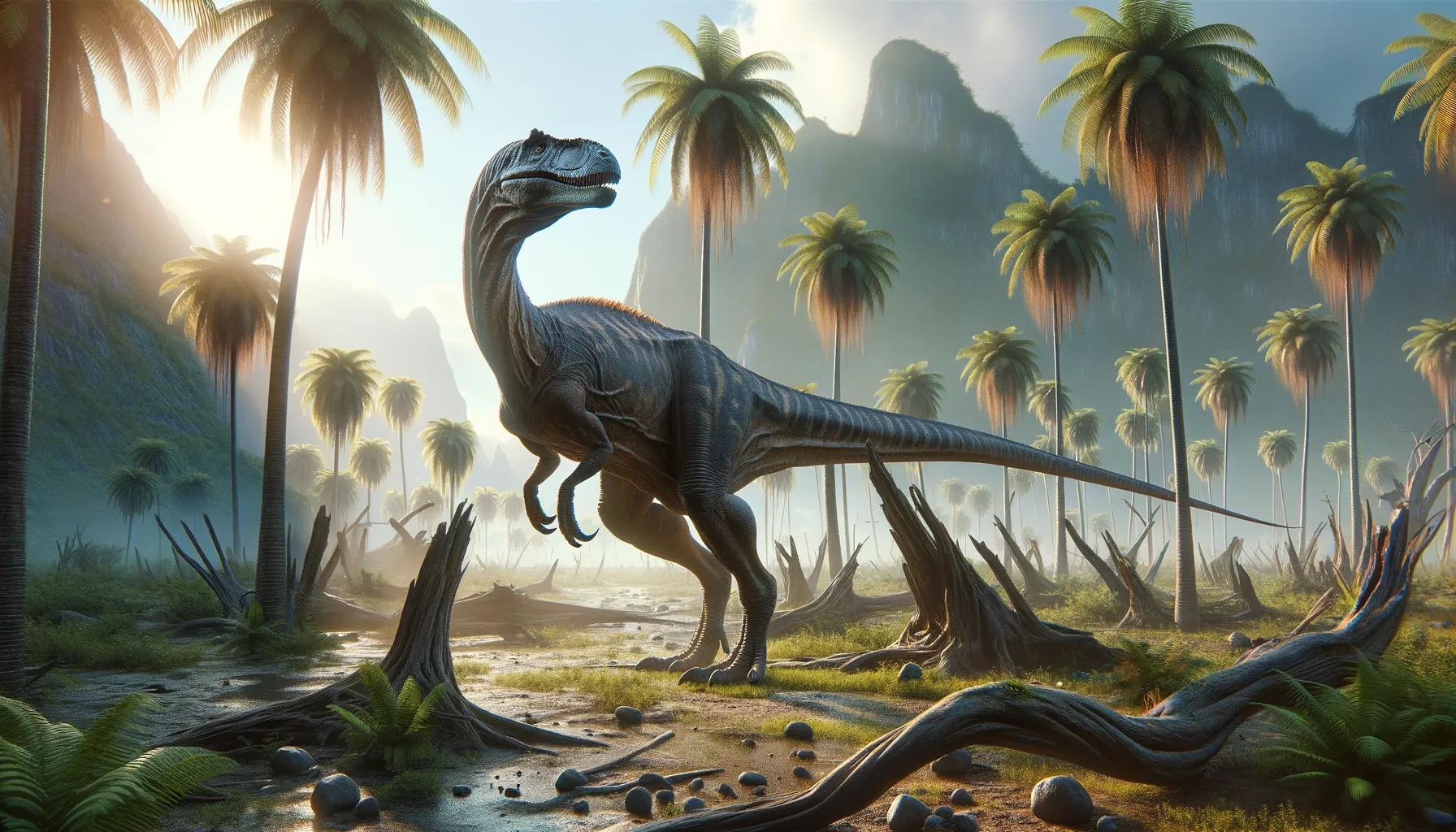
Draconyx
A Jurassic herbivore with swift legs!
Period
Jurassic
Length
Roughly 3.5 meters long.
Height
About 1 meter at the hip.
Weight
Approximately 400 kilograms.
Draconyx was a herbivorous dinosaur that lived during the Jurassic period. It belonged to a group known as iguanodonts, which were characterized by their beak-like mouths and plant-eating habits. Known for its moderate size compared to other dinosaurs, Draconyx had strong hind legs that likely allowed it to move quickly. Its fossils have provided significant insights into the evolution of ornithopod dinosaurs.
Diet
Draconyx primarily fed on plants, possibly using its beak to grasp and strip foliage. It likely consumed a variety of vegetation, adapting its diet to available plant resources.
Hunting
Being a herbivore, Draconyx did not hunt for food but may have foraged in groups to protect against predators. Its social behavior could have provided some level of safety from carnivorous dinosaurs.
Environmental challenges
Draconyx faced environmental challenges such as changing climates and fluctuating food availability, which would have influenced its migratory patterns. Additionally, the presence of large predators in its habitat would have required constant vigilance and possibly led to the development of group living for defense. Seasonal droughts or floods could also pose threats to its food sources. These pressures likely played a role in shaping its behavioral adaptations over time.
Speed
Moderately fast when necessary, using strong hind legs.
Lifespan
Estimated around 20 to 30 years in the wild.
First discovery
Discovered in Portugal in the early 21st century.
Fun Facts
- Draconyx means 'dragon claw' due to the large claws it possessed on its thumbs.
- This dinosaur lived during the Late Jurassic period, roughly 150 million years ago.
- Draconyx was a herbivorous dinosaur belonging to the family Iguanodontidae.
- It was discovered in Portugal, and its fossils are considered an important part of the European dinosaur record.
- Draconyx was relatively small compared to other dinosaurs, measuring about 3 to 4 meters in length.
- Despite its fearsome name, Draconyx was a gentle plant-eater, using its beak to munch on vegetation.
Growth and Development
Draconyx would hatch from eggs, like many dinosaurs, and grow rapidly to reach a size that would better protect it from predators. Juveniles may have stayed close to adults for protection and learning about food sources. Growth rates would likely slow as individuals approached adulthood.
Habitat
Draconyx inhabited lush, forested areas along riverbanks and floodplains where vegetation was abundant. Its environment was characterized by a warm, humid climate with plenty of food sources. These habitats would have supported diverse dinosaur communities, offering safety in numbers.
Interaction with other species
Draconyx likely coexisted with various dinosaur species, including formidable predators like Allosaurus. Social herding could have been a strategy to deter attacks from these predators. Additionally, it may have competed with other herbivores for food resources. This coexistence would have involved complex interactions with both plant and animal species within its ecosystem.
Natural lifespan
The natural lifespan of Draconyx is estimated to be around 20 to 30 years.
Reproduction
Draconyx likely laid eggs in nests and may have provided some care for its young, similar to other herbivorous dinosaurs. Nesting sites would be selected for protection from predators and environmental extremes. Clutch sizes could vary, influenced by environmental conditions and resource availability.
Social behaviour
Draconyx might have formed small herds as a defense mechanism against predators. This social grouping could have included interactions such as coordinated movements and communal care of young. Additionally, group living might have facilitated efficient foraging by sharing information about food resources.
Fossil locations
Draconyx fossils have been primarily found in Portugal, offering key insights into the Jurassic ecosystems of Europe. These site discoveries provide valuable information on the distribution and diversity of iguanodonts during this period. The preservation of its remains has been integral in reconstructing the anatomy and likely behaviours of this dinosaur.
